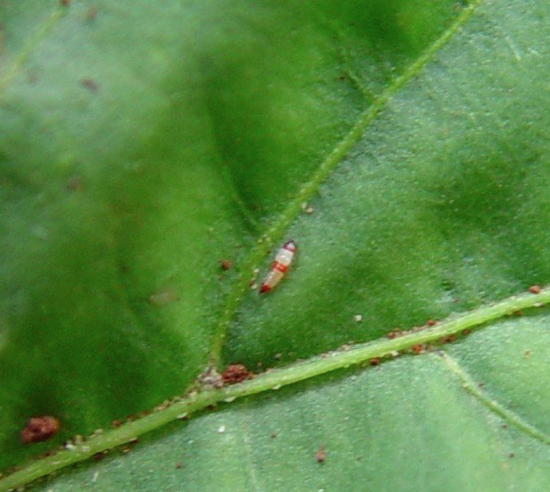Red banded thrips (Selenothrips rubrocinctus)
Credit: Biovision-Infonet

(c) A.M. Varela, icipe
The adult of the red banded thrips is reported as a pest of mangoes in Kenya (AIC, 2003). Adult thrips are dark brown, about 1 mm long. Immature thrips (nymphs) are yellow with a bright red band around the base of the abdomen. Nymphs and adults feed together, normally on the underside of the leaves. Attacked leaves become dark stained and rusty in appearance with small shiny black excreta present. Leaf edges are curled.
Several other species of thrips are found on mango flowers. However, not all of them are pests. Their role varies according to the species. Some species are present in large numbers in mango flowers, but there is no evidence of damage or crop loss. Some thrips species are considered important pollinators. Other species of thrips attack the mango fruit. Thrips feeding on the fruit surface causes a rough, greyish white discolouration.What to do:
- Conserve natural enemies. Predatory thrips and mites, anthocorid bugs among other natural enemies are important in natural control of thrips.